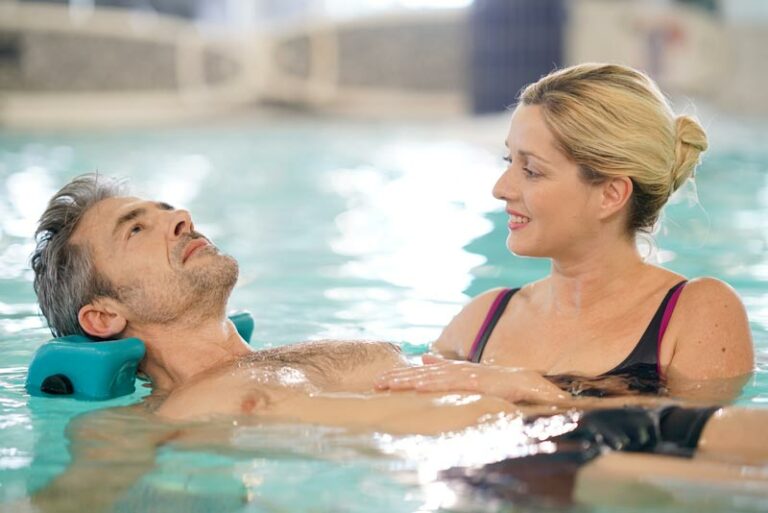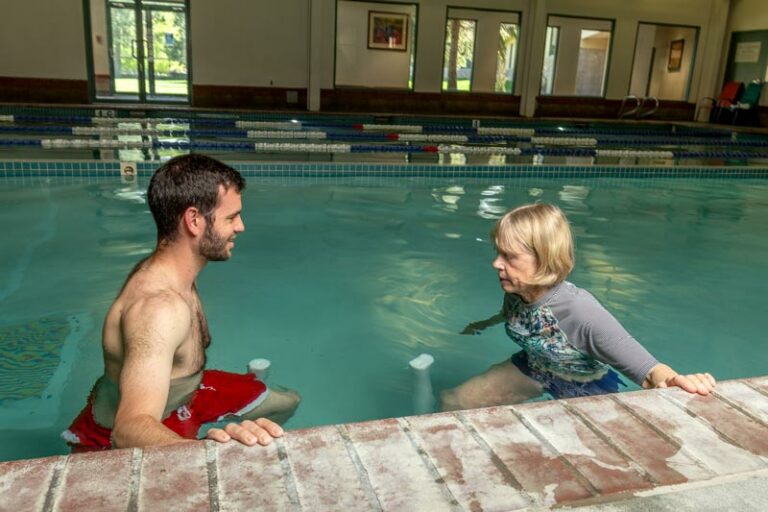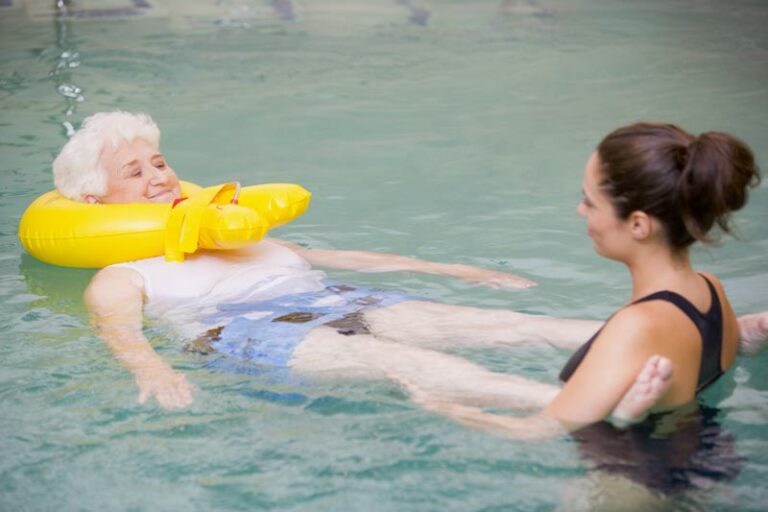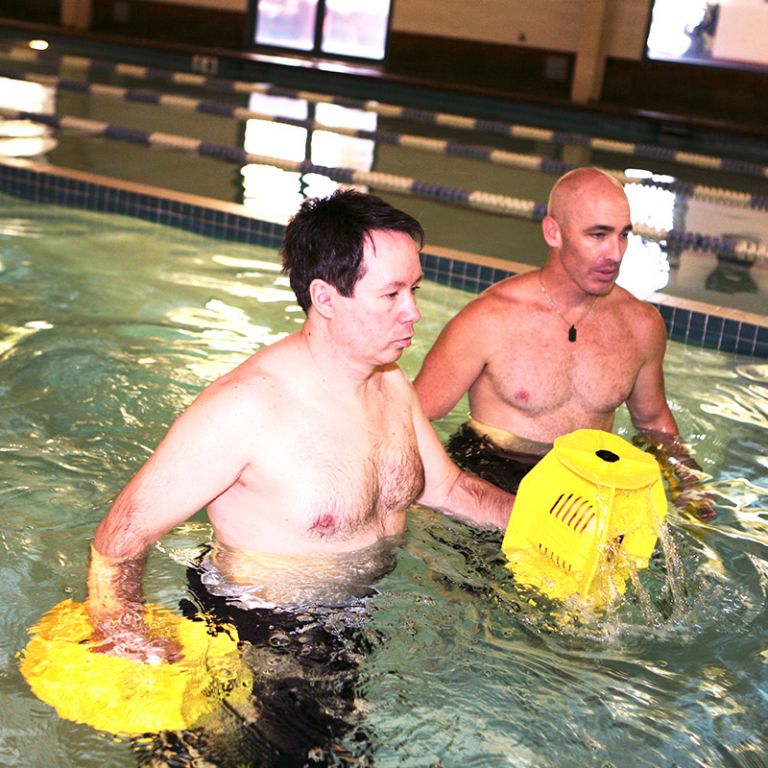What is aquatic therapy?
Aquatic therapy, a branch of physical therapy, utilizes water and specially designed activities to restore functional abilities in individuals. The conditions treated can range from post operative cases, acute injuries to chronic conditions. It stands out as a unique approach that harnesses the therapeutic potential of water.
How does aquatic/water physical therapy work?
The aquatic environment provides a dynamic and engaging space for water physical therapy. Four key components distinguish aquatic therapy from traditional land-based therapies:
- Buoyancy: Aquatic therapy capitalizes on buoyancy to provide assistance and support during exercises. By decreasing gravitational forces on the body, buoyancy enables individuals to move with reduced stress on joints and bones. This allows for less compressive forces and greater ease of movement.
- Heat: Conducted in a heated pool, aquatic therapy takes advantage of warm water to relax muscles, increase circulation and enhance joint range of motion. The soothing warmth contributes to a more comfortable and effective rehabilitation experience.

- Hydrostatic Pressure: The water’s hydrostatic pressure facilitates improved blood circulation from the legs to the heart. This mechanism aids in reducing swelling in extremities, particularly the legs. As swelling decreases, joint tenderness diminishes, and range of motion improves, promoting a faster and more comfortable recovery.
- Resistance: Unlike land-based therapies where resistance is primarily in one direction (gravity), aquatic therapy offers multidirectional and graded resistance (the faster you move the more resistance you get). These unique features allow for balanced muscle engagement, improved joint stability, and increased sensory awareness. It enhances strength and coordination in ways not achievable on land.

10 benefits of aquatic/water physical therapy.
Aquatic therapy presents a myriad of benefits, making it a versatile and effective environment for rehabilitation. Some key advantages include:
- Normalization of Movement: Aquatic therapy aids in restoring natural movement patterns by leveraging the buoyancy and resistance of water, promoting better mobility and functionality.
- Improvement in Trunk Control and Postural Alignment: The buoyancy and resistance in water contribute to enhancing and challenging trunk control and improved postural alignment by engaging and strengthening core muscles.
- Increase in Range of Motion: The water environment facilitates increased joint flexibility and a broader range of motion, promoting better mobility and reducing stiffness.
- Enhanced Balance and Coordination: The multidirectional resistance and turbulence in water challenges and improves balance and coordination, helping individuals develop greater stability.
- Improvement in Perceptual and Spatial Awareness: Aquatic therapy engages awareness, enhancing perception and spatial orientation through purposeful and varied movements in water.
- Boost in Motivation and Mood: The enjoyable nature of warm water physical therapy often leads to increased motivation and elevated mood levels in individuals undergoing rehabilitation, fostering a positive mindset.
- Increase in Muscular Strength and Endurance: The resistance offered by water supports the development of muscular strength and endurance by engaging a wide range of muscle groups throughout the body simultaneously.
- Cardiovascular Endurance: Aquatic therapy contributes to improved cardiovascular endurance through engaging most muscles (including your heart!) in the water, promoting heart health and overall fitness.
- Decrease in Pain and Muscle Spasms: The buoyancy, compression and warmth of water contribute to pain reduction and relaxation of muscles, alleviating discomfort by promoting circulation and reducing muscle tension.
- Enhanced Joint Stability: Aquatic therapy promotes joint stability through a combination of buoyancy and resistance. The supportive water environment allows individuals to work on joint movements with increased control and less pain, contributing to overall joint health and stability.
Who can benefit from aquatic/water physical therapy?
Aquatic therapy is a versatile option suitable for individuals facing various conditions, including, but not limited to:
- Neck or Back Pain
- Orthopedic Injuries (pre-, post- and/or non-operative patients)
- Stroke
- Arthritis
- Spinal Cord Injuries
- Fibromyalgia
- Neurological Conditions (e.g., Parkinson’s Disease, Multiple Sclerosis)

In conclusion, aquatic/water physical therapy emerges as a holistic and effective approach to rehabilitation, offering a range of benefits that extend beyond traditional land-based physical therapy. Its unique combination of buoyancy, heat, hydrostatic pressure, and resistance makes it a valuable tool in the realm of PT, catering to diverse rehabilitation needs.

Consider water physical therapy for your rehab needs
Aquatic therapy presents a myriad of benefits, making it a versatile and effective environment for rehabilitation.

